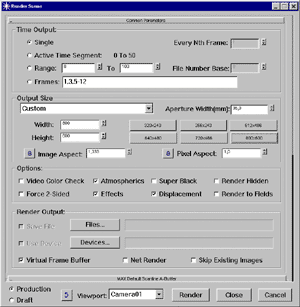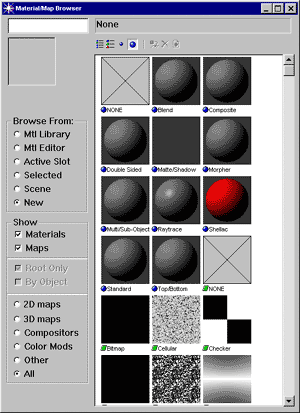 |
 |
 |
 |
| iXBT Labs - Computer Hardware in Detail |
|
|
|
|
 |
|
|
Professional 3D Accelerators
in 3D Studio MAX 3.1,
November 2001, Part 2
|

Part 2: Testing technique for the accelerators
in the 3D Studio MAX 3.1
|
The method below is used to test the accelerators
in the first three scenes.
- Installation of the Windows NT 4.0 (or Windows 2000 Professional)
on a blank hard drive.
- Installation of all Service Packs up to 6 for Windows NT 4.0
or Service Pack 2 for Windows 2000.
- Installation of drivers of an accelerator and a mainboard of
the computer.
- Installation of the 3D MAX 3.1 in a standard configuration.
- Start-up of the 3D MAX and of one hardware APIs (OpenGL).
- Loading of the first demo scene. The test consists of several
stages: estimation of quality and stability of operation, estimation
of performance in working windows in different shading modes and
at different rendering speeds. (To change a viewing mode we use
a screen configuration menu which can be displayed by pressing
the right button on a mark in any upper left-hand corner of any
of 4 viewport windows).
- Viewing of a scene in a full window in the following modes:
wireframe, smooth+highlights with textures off, smooth+highlights
with textures on and correction off, and smooth+highlights with
textures on and correction on. The camera is turned to move and
turn objects. We record subjective estimation of an operating
speed, smoothness of motion of objects, a speed of redrawing of
the scene while objects are moving, and take screenshots.
- Subjective estimation of a speed and quality of operation with
4 viewport windows activated in the following modes: wireframe,
facets, smooth+highlights and smooth+highlights with textures
and correction (each window has its own mode). We also estimate
a speed of drawing of the changes in each window while objects
are moving or the camera is rotating. Screenshot.
- Rendering of an image into files: 320X240 and 800X600, and
recording of the rendering time. Before it, a scene must be reloaded
as changes in coordinates of the objects or of the camera can
affect a rendering speed.

- Viewing of a standard library of the materials in the View
large icons mode:

Estimation of an opening speed of the materials
in full while the library is scrolled.
- Test #1. Viewing of the animation in the preliminary
mode in a full window. Wireframe mode. We estimate smoothness
of the animation, check whether any frames are skipped, and record
an average FPS of the scene.
- Test #2. The same as item 11, but in the facets mode.
- Test #3. The same as item 11, but in the smooth+highlights
mode.
- Test #4. The same as item 11, but in the 'smooth+highlights
with textures and correction' mode.
- Test #5. Viewing of animation in the preliminary mode
in 4 viewport windows. Windows are the same as in item 8. The
wireframe window is animated. We estimate smoothness of the animation,
check whether any frames are skipped, and record an average FPS
of the scene.
- Test #6. The same as item 15, but now the facets window
is animated.
- Test #7. The same as item 15, but now the smooth+highlights
window is animated.
- Test #8. The same as item 15, but now the "smooth+highlights
with textures and correction" window is animated.
- Changing of a screen resolution for the higher one without
leaving the 3D MAX to check whether the 3D MAX remains operable.
- Repeat of items 6-15 with the next demo scene.
- When all tests are carried out (items 6-20) with all demo scenes
we carry out the same analyses (items 5-20) on other APIs (if
they are supported by the accelerator's drivers).
- Analyses of the obtained data.
The testing method for the fourth and fifth scenes
is simpler - a scene is viewed under all APIs, but we estimate only
an average FPS and quality of the scene.
[ Part
1 ]
[ Part
3 ]
[ Part
4 ]
[ Part
5 ]
Write a comment below. No registration needed!
|
|
 |
|
|












